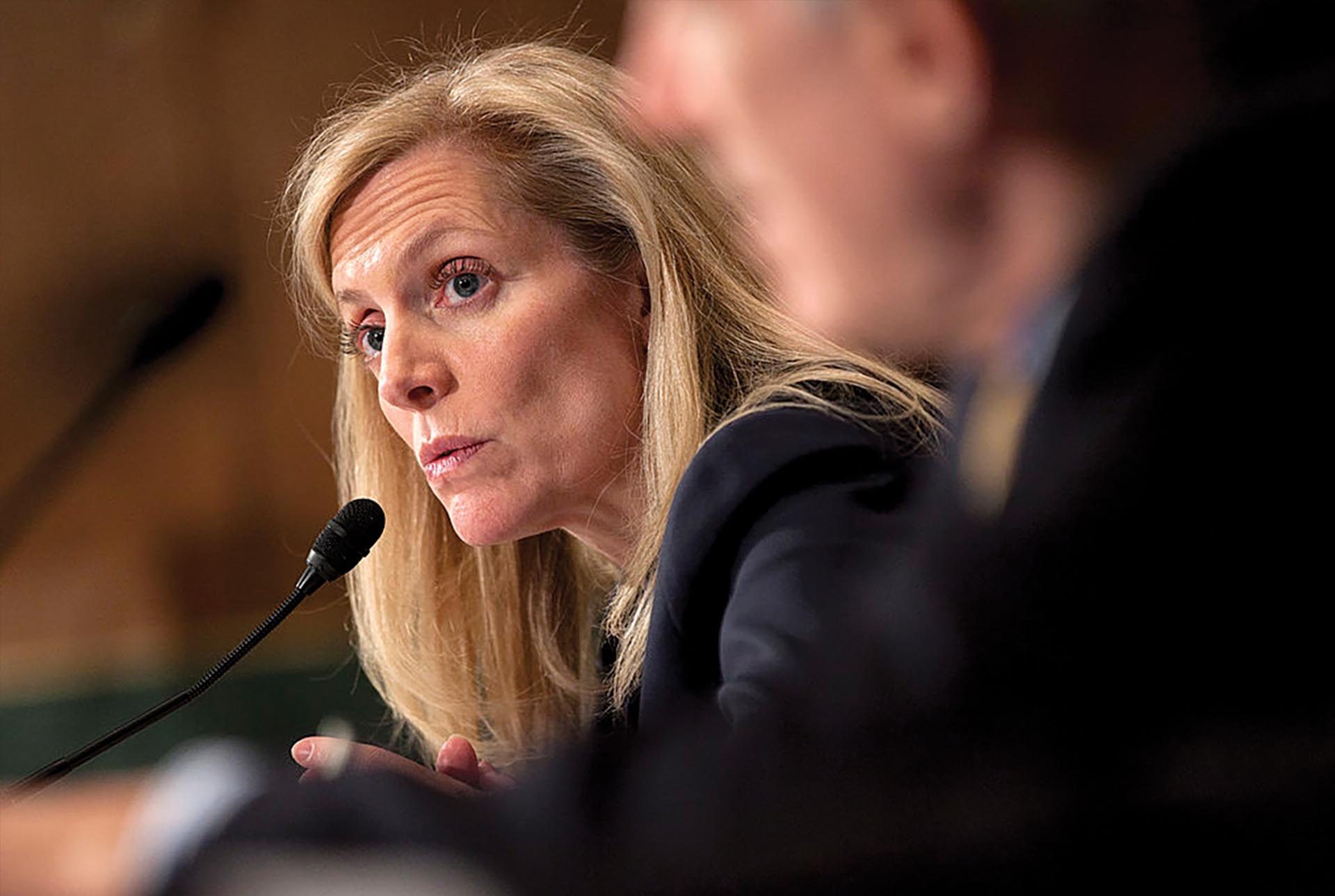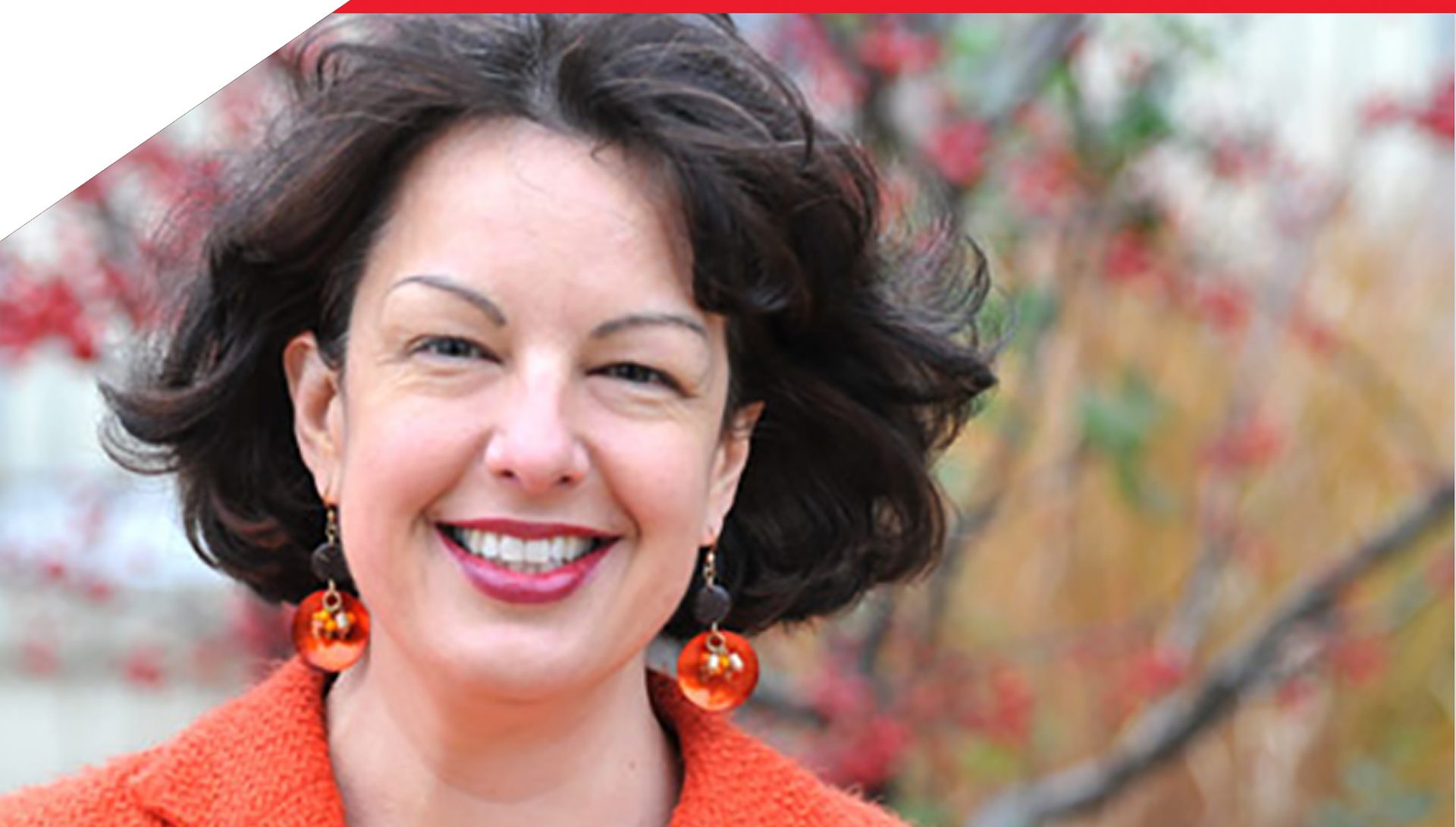On the Federal Reserve Board: The Interesting Days of Lael Brainard ’83

As one of five current members of the Federal Reserve Board—which oversees the country’s central banking system—Lael Brainard ’83 has a big hand in crafting and directing U.S. monetary policy.
In their efforts to build and maintain a safe, flexible, and stable financial system, Brainard and her colleagues spend a lot of time in Washington, D.C., with top economists “going over statistics, analysis, and econometric research to get a sense of how the economy is likely to perform and what implications this has for policy.”
But she’s not at all confined to the capitol. In fact, Brainard frequently travels around the country to speak with community, workforce training, and fair housing groups, drilling down to get a better sense of how the Fed policy she helps direct affects her fellow Americans.
“We want families to be financially resilient so they can pursue their goals, whether it be owning a home or sending their kids to college,” she says. “That’s the core of our responsibilities.’
In February, we caught up with Brainard for a conversation on her role with that most quantitative institution, the Fed.
Q: What is a typical day for a member of the Federal Reserve Board?
A: It varies a tremendous amount.
If I am getting ready for a monetary policy decision meeting with the Federal Open Market Committee, I’ll spend a lot of time with our economists, going over statistics, analysis, and econometric research to get a sense of how the economy is likely to perform and what implications this has for policy.
We also have responsibility for maintaining the country’s financial stability, so I spend a fair amount of time talking to partcipants in the financial markets to understand some of the underlying technical factors as well as getting their insights on market developments.
In carrying out our responsibilities for consumer protection and community development, I rely in part on analyzing research and data, trying to see how various groups are doing in the economy—for instance, why people in rural areas are not faring as well as in urban areas, why has labor force participation among working-age men fallen, , and why some racial and ethnic groups face persistent disparities in income and wealth.
To better understand these issues, I tend to travel around the country and visit with people to get more of a qualitative sense of how they are experiencing the economy.
Q: So it’s data analysis—and talking to our citizens?
A: Yes. It’s a mixture of qualitative evidence that I check against the quantitative evidence. Every few months I visit communities that are facing particular challenges. I meet with community groups, workforce training groups, affordable housing groups. I try to understand the challenges they face and how they’re experiencing the economy.
Q: Any particular mood that has surprised you?
A: The impacts of the financial crisis were slow to heal. It took a very long time for many families in the middle of the income distribution to feel confident in their ability to maintain employment, to afford healthcare and housing, to invest in education, and to rebuild their savings. We have seen consumer confidence improving, but we still see a lot of financial fragility when we’re visiting households, and this is corroborated by our surveys.
Q: To what extent is your technical job as an economist also political?
A: The Federal Reserve is a policy institution, so once we are appointed to the board, we are supposed to make the best judgments, the best analysis, that we possibly can to advance the objective that Congress has set out for us. Our main monetary policy goal is to keep the economy at maximum employment with stable inflation, but we also have responsibilities for maintaining the safety and soundness of large banking institutions, safeguarding financial stability, protecting consumers, and promoting community development.
Q: Do these charges vary with the Congressional majority?
A: A lot of the legislation that we operate under is durable. Congress has tasked us with safeguarding the American economy and pursuing the enduring interests of the American public. Some of our main mandates from Congress date back 41 years, some as far back as 106 years.
Q: What are the upcoming challenges for the Federal?
A: Our main challenge is to keep the economy performing well with a very strong labor market, bringing people who have been sidelined back into productive employment, while also maintaining a stable financial system that encourages business investments. We want families to be financially resilient so they can pursue their goals, whether it be owning a home or sending their kids to college. That’s the core of our responsibilities.
In researching the longer trends of the economy, we’ve found a notable uptick in inequality—not only income equality but also a pronounced widening of wealth inequality. These issues may have important implications for economic opportunity and mobility–and in turn for economic growth and the vibrancy of the labor market down the road. We try to keep our eyes on some of those long-term trends that affect the health and resilience of the American public.
Q: Are Bitcoin and cryptocurrency of interest to the Fed?
A: Developments associated with cryptocurrencies such as Bitcoin are important for us to research and monitor, and we have a team across the Federal Reserve System that is tracking these developments closely. That said, so far it appears cryptocurrencies are being used far more as speculative assets than as a mechanism for payments. The Federal Reserve has important responsibilities in the payment system, so we will continue researching developments associated with cryptocurrencies and digital ledgers. We are also monitoring fintech closely.
Q: You spoke on NPR recently about “The Push to Break up The Boys Club at the Fed.” Tell us about that.
A: One characteristic of our work is that we are very driven by evidence and research. Increasingly, the research is very convincing that the quality of deliberations and the decisions that result from them is stronger when the decision makers come from diverse backgrounds, bringing a diversity of perspectives.
It’s very much in our interest as an institution that’s responsible for promoting the public interest to have that kind of diversity of perspective so that we can have the best possible policy outcomes.
When the Federal Reserve was founded, it was structured in a way that clearly acknowledged the importance of diversity. That is why we have 12 Reserve Banks that are distributed across the country and intended to represent regional differences. But the focus at that time was on gaining geographic diversity. In today’s economy, it’s clear that the same principal of valuing diversity that was enshrined in our founding statute should lead us to have a decision-making table at the Fed that looks like America.
Q: Tell us about a day that stands out as particularly memorable.
A: In November, I went to Pine Ridge, South Dakota, with our community development folks from the Minneapolis Fed and spent a day with members of the Oglala Lakota Nation. I visited Oglala College and heard from Thomas Shortbull about how they are providing higher education for people who live in Pine Ridge. I met with the leaders of local Community Development Financial Institutions about the challenges they face in creating opportunities for community members to own homes for the first time. I met with several small business owners who were able to get loans to provide construction services or open stores on the reservation so people wouldn’t have to drive an hour to get basic groceries. We visited a new credit union, where people are able to deposit their money locally for the first time.
Meeting with people who are investing all their energy and their entrepreneurial spirit in creating opportunities for their community brings alive the importance of our mission, which is very motivating to all of the people who work at the Federal Reserve
Q: Any advice to current Wesleyan students or recent grads?
A: The opportunities that Wesleyan students have to acquire intellectual frameworks and tools of data analysis—and quantitative analysis, more generally—are extremely important. These will be powerful enablers later in life to advance a variety of passions and goals that Wesleyan students choose to pursue.
Lael Brainard ’83 majored in the College of Social Studies at Wesleyan and graduated with University Honors. She earned an M.S. and a Ph.D. in economics from Harvard University and received a White House Fellowship. After appointment as an associate professor applied economics at the Massachusetts Institute of Technology’s Sloan School of Management, she later served as undersecretary of the U.S. Department of Treasury and counselor to the Secretary of the Treasury. As the deputy national economic adviser and deputy assistant to President Clinton, she was his personal representative to the G-7/G-8. Lael Brainard took office as a member of the Board of Governors of the Federal Reserve System on June 16, 2014, to fill an unexpired term ending January 31, 2026.


